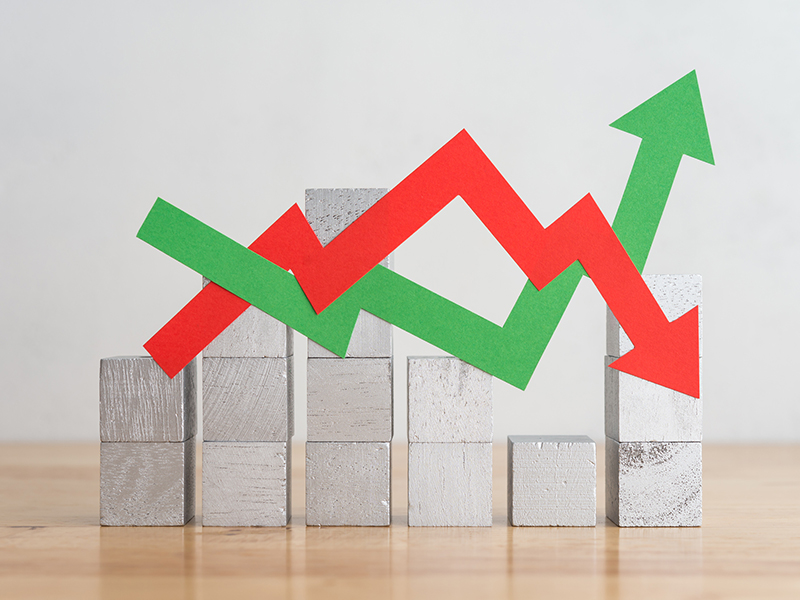When the insurance markets are soft, you have ample access to insurance coverage options, and rates are generally more affordable. Yet in a hard market, the opposite is true. That begs the question: Why do we have a market swing at all?
Numerous factors contribute to a market swing.
They include:
- Overall economy
- Low investment returns
- Claim activity
- Weak underwriting results
- Reinsurance market pricing
- Climate change
Overall Economy
The insurance markets, generally, tend to reflect the ups and downs of the economy. When stock markets are in good shape, when investors are doing well and expanding their investments, when retail is booming, the insurance market tends to do well.
While that is not a hard-and-fast rule – catastrophic losses could still cause a hardening of a market during a period of strong economic growth – the fact that insurance carriers invest in stocks as a means of building their reserves means their own business is impacted by stock market activity.
When the economy is going through periods of inflation or recession, however, carriers can see their own investments impacted negatively. For that reason, they may not have adequate reserves set aside to pay claims on anything other than the policies they’ve already issued. As a result, they will pull back on offering more policies to new customers. If the economic impact is sizable, existing customers could see price increases or policies not renewed.
Low Investment Returns
The same thing can happen when carriers’ investments don’t deliver the returns they were expecting. When a carrier invests your premium payments, they are attempting to grow that money so that they can afford to cover losses and make a profit.
Those investments are also influenced by how much they have to invest. At times when the insurance market is soft, the premiums are generally lower. That means your carrier has less money to invest, and their own profitability takes a hit. That in itself can cause a hardening of the insurance market in certain coverage areas. When carriers see an imbalance between money earmarked for claims and their profitability, they make corrections to restore balance to their bottom line.
Claim Activity
Large losses, losses over a sustained period of time, more frequent and more severe losses, all contribute to the state of the insurance market. When claims payouts are low, either from fewer events or from fewer large-scale disasters, the cost the carriers pay to cover those events is lower. Yet an active hurricane season or a drought-stricken area being inundated with wildfires, can drive the cost up which in turn, increases the cost of covering these types of events in the future. Even one event can be costly, which was the case with Hurricane Katrina – an estimated $125 billion in losses.
Also, the price of medical care, or of replacing damaged or destroyed property, increases over time. Those costs increase further when class action lawsuits or expensive legal judgments are handed down. The more an insurance carrier has to pay for a claim, the less they have in reserves to pay the next claim. And if claims are trending upward in terms of expenses, that means the price of the policy must increase to offset that additional cost.
Weak Underwriting Results
The price adjustment is the job of the underwriter. An underwriter evaluates the carrier’s risk in insuring businesses, autos, homes, drivers, life, and health. The underwriter examines the risks involved in covering each area, then comes up with a price for that policy.
However, even underwriters can miscalculate. A risk that may not have existed before can emerge. An example: terrorism risk prior to 9/11 was very low. So underwriters set the price low. In some cases, terrorism coverage was a free addition to a policy. Post 9/11, terrorism coverage was temporarily unavailable. Currently, terrorism coverage is available, but at a significant price.
Reinsurance Pricing
Your insurance carrier may transfer the entirety of your risk (which is what a policy does – transfers your risk of loss to the insurance carrier), but they may also transfer a portion of that risk to make sure they’re not taking on too much. This reinsurance market assumes that portion of the risk your insurance company isn’t comfortable taking on. Carriers pay reinsurance companies, in a similar way to you paying your carrier for that coverage.
However, like insurance carriers, reinsurance companies also raise and lower their pricing. If they take on a lot of carrier risks, they must offset that additional risk with higher pricing. What that means to you: Your carrier now has additional money going out, which impacts their profitability and their reserves.
Climate Change
Insurance fact: Natural disasters are happening more frequently, and storms and other events are causing more damage.
When storms are more severe, losses mount. Insurance carriers have to pay more for claims. In 2020, there were 980 natural disasters globally, causing $210 billion in damages . In 2019, there were 860 natural disasters, and losses in US dollars came in at $166 billion. The impact of increased losses and rising claims costs means that nearly every property insurance policy has seen increased rates, lower limits, or changes to what the carriers will cover.
Fluctuations in every market are expected. They serve as corrections when conditions are such that a loss could devastate not just one carrier, but the entire industry. When claims frequency and/or severity become too much to bear, carriers and their underwriting teams will do their best to correct their pricing and the amount of business they accept so that your claim, should it happen, will be paid.
Any market swing is beyond your control; with expertise and knowledge from your insurance advisor, you can manage the impact to your business. Contact one of our trusted advisors today.
